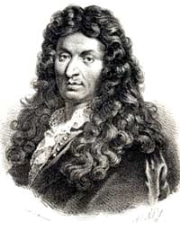 |
| Verizon Hall exterior under the Kimmel Center dome |
 |
| Inside the Academy of Music |
"It's only an hour away," I thought, as I examined the Orchestra's schedule of concerts. I was in a giving (to myself) mood and selected an early November program devoted to Mahler's Second Symphony, "The Resurrection," and a later November program which featured the Orchestra's first-chair clarinetist, Ricardo Morales. The concerts were fantastic as I expected they'd be, but the extra stuff before and after were unexpected delights.
CONCERT #1: THE MAHLER
I like getting lost in a Mahler symphony, but the real reason
 |
| Gustav Mahler (1860-1911) |
I selected this concert was to watch the relatively new conductor of the Philadelphia Orchestra conduct the giant piece. I hadn't seen Yannick Nezet-Seguin conduct yet, but I've been impressed with his social media presence and his outreach to the musically-interested community. He has a superstar reputation and held that orchestra in the palm of his hand throughout the over-eighty minute work.
This symphony first performed in 1894 is known as "The Resurrection" because it's the kind of work that builds and builds to a humongous climax as the huge orchestra and choir (the Westminster Choir College choir from Princeton) works out the melodies and motives and transforms them into a giant new sound. One of the delights of this afternoon was the pre-concert talk where I learned a bit about The Resurrection. There's no indication on the score, but Mahler described the 'program' or story in general terms. The listener should imagine themselves standing at the grave of a beloved deceased person and let the music of the first movement represent their grief. The second, third, and fourth movements are intermezzi in which the mourner reminisces on the deceased's life. Then in the fifth movement, the listener is graveside again, experiencing the pain of loss along with a glimpse of optimism that comes with thoughts of the last judgment and resurrection. (I struggle with words to describe this profound piece; the music says so much more.) It's during the fifth movement the the giant choir sneaks in, at first barely perceptible, but ultimately strong at the conclusion.
After the meal of Mahler, there was desert! three of the orchestra's cello players came back on stage to play some chamber music. Yannick Nezet-Seguin himself (in street clothes now) introduced this "Postlude,"Leopold Mozart's Frosch-Parthia in C major and the Beethoven Trio in C major, Op. 87, both works arranged for three cellos.This symphony first performed in 1894 is known as "The Resurrection" because it's the kind of work that builds and builds to a humongous climax as the huge orchestra and choir (the Westminster Choir College choir from Princeton) works out the melodies and motives and transforms them into a giant new sound. One of the delights of this afternoon was the pre-concert talk where I learned a bit about The Resurrection. There's no indication on the score, but Mahler described the 'program' or story in general terms. The listener should imagine themselves standing at the grave of a beloved deceased person and let the music of the first movement represent their grief. The second, third, and fourth movements are intermezzi in which the mourner reminisces on the deceased's life. Then in the fifth movement, the listener is graveside again, experiencing the pain of loss along with a glimpse of optimism that comes with thoughts of the last judgment and resurrection. (I struggle with words to describe this profound piece; the music says so much more.) It's during the fifth movement the the giant choir sneaks in, at first barely perceptible, but ultimately strong at the conclusion.
CONCERT#2: THE CLARINET
 |
| Ricardo Morales http://www.wka-clarinet.org/ VIP-Morales.htm |
The orchestra, under the baton of guest conductor Juanjo Mena, also played Rimsky-Korsakov's Capriccio Espagnol (with all its fiery clarinet licks) and the Tchaikovsky Symphony #5. And there was desert after this: four orchestra members enchanted us with the Ravel String Quartet.
THE KIMMEL CENTER TOUR
A soft-spoken veteran usher named Bill walked a gang of us through the Kimmel Center: Verizon Hall, the Perelman Theater, and the mysterious Roof Garden. Verizon Hall is where the Philadelphia Orchestra concerts happen along with other events including the venerable Philadelphia Speaker Series I also attend. The spectacular mahogany interior of this hall is shaped like a cello to enhance the sound, and (I didn't know this until the tour), is protected from subway noise by twenty-four-inch blocks of rubber under the building. The corridors we walk through to get into the hall also provide insulation from noise. Centered behind the stage is the Fred J. Cooper Memorial Organ with its 7,000 pipes. It is the largest concert hall organ in the United States.
 |
| Verizon Hall's stage set up for the Philadelphia Orchestra |
 |
| Inside the Perelman Theater |
 |
| The Kimmel Center's cool Roof Garden space (looking north) |
 |
| The Roof Garden again, looking west |
 |
| Looking south at Broad Street (the Avenue of the Arts) from the Roof Garden |































